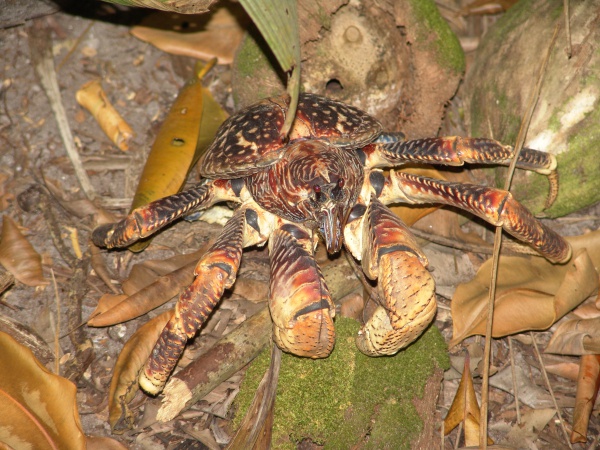Facts About Coconut crab
The coconut crab, also known as the robber crab or palm thief, holds the title of the largest land-dwelling arthropod in the world. These intriguing creatures can weigh up to 4.1 kg (about 9 pounds) and reach lengths of up to 1 meter (about 3 feet). They are predominantly found around the Indian Ocean and parts of the Pacific.
While related to hermit crabs, adult coconut crabs markedly differ in that they do not carry shells. Instead, they develop a sturdy exoskeleton that acts as armor.
Coconut crabs have a diet comprising fruits, nuts, seeds, and other organic matter, earning them the nickname "robber crabs." They possess an exceptional sense of smell and are capable of climbing trees in search of food.
Reproduction occurs on land, with mating taking place there. Afterward, females return to the sea to release their fertilized eggs. The larvae go through multiple developmental stages before finally settling on land, a process that can take up to five years before they reach sexual maturity.
The wide distribution of coconut crabs corresponds to regions where coconut palms grow. They live solitarily in burrows on land and are highly adapted to a terrestrial lifestyle. Interestingly, they can drown in water within just a few hours.
Coconut crabs face threats from hunting and habitat loss due to their large size and the high quality of their meat. Some regions have implemented conservation measures to protect these unique creatures.
Aside from their powerful pincers, coconut crabs hold a place in traditional beliefs in some cultures. Western scientists have been aware of them since the 16th century and have assigned them various names, including coconut crab, robber crab, and palm thief.
Conservation efforts are ongoing in several areas, aiming to ensure the survival of this remarkable species despite the challenges they face.

 Nepal
Nepal